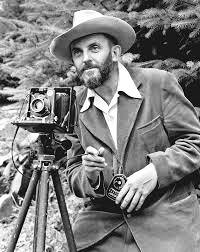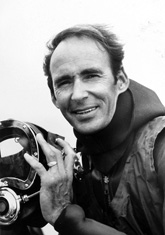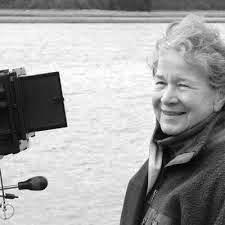— with the exhibit FRAGILE WATERS: Ansel Adams, Ernest H. Brooks II, and Dorothy Kerper Monnelly
— by Diane Martindale —
FRAGILE WATERS, a traveling fine art photography exhibition, opens Saturday, April 23, Earth Day weekend, and will run through September 5, Labor Day, 2016 at the San Juan Islands Museum of Art (SJIMA), Friday Harbor, Washington.
FRAGILE WATERS is a powerful aesthetic and environmental statement, blending inspiring black-and- white photography by three renowned photographers: Ansel Adams, Ernest H. Brooks II, and Dorothy Kerper Monnelly, who feel a deep reverence for the marine environment and understand the integrity of place.Photokunst LLC in Friday Harbor, developed FRAGILE WATERS, and is honored to represent and travel this vitally important exhibition.
Water is essential to all life we know. Yet our oceans, rivers, lakes and other sources of water are in crisis. Extreme weather events, aquifer depletion, toxic contaminants, fracking, pollution, spills, ocean acidification, floods, desertification, and the impact of rising seawater, are just a few of the urgent issues that confront us. The FRAGILE WATERS exhibition was born out of these concerns.
The 117 black-and-white photographs present a powerful collective statement. In technique and time these photographers span a century. These artists communicate the beauty and vitality of water, focusing on nature and engage the viewer in affirming the intrinsic aesthetic, emotional and essential life value of water.
Ansel Adams laid a foundation for his legendary technical mastery, as he traveled burdened with a cumbersome 8 x 10 camera and glass plate negatives, in pursuit of unspoiled nature. Adams pre-visualized images, expertly crafting elegant iconic landscapes where he intensified and purified the experience of natural beauty, capturing the sublime magnificence of wilderness. His work has been used to persuade lawmakers time and time again to preserve special environments, and create parks for a permanent public legacy.
As a child Ansel Adams lived amidst the sand dunes of San Francisco overlooking the “Golden Gate” of the San Francisco Bay. He felt and smelled the ozone and fog, roamed freely, was precocious, and was a misfit in school. After reading In the Heart of the Sierra, by Hutchings, Ansel was infatuated and persuaded his parents to vacation in Yosemite that summer. For the rest of his life his reverence for nature, the mountains, and light, as he conveyed in his photographs, inspired and brought music to the hearts of many. “I hope that my work will encourage expression in others and stimulate the search for beauty and creative excitement in the great world around us.”
Photographer, advocate, conservationist, mountaineer, writer, teacher, musician, scientist, innovator, curator —- Adams was all of these. He shared with delight and persisted in what was important to him, such as preservation of wilderness areas, having photography accepted as a fine art, teaching creative photography, and encouraging others. His ten volumes of technical manuals on photography continue to be the most influential books ever written on the subject. This Is the American Earth, with text by collaborator Nancy Newhall, started the publishing movement of “coffee table” books so popular today. Adams’ renowned photography of the magnificent American West has become the face of wilderness for many.
Ansel Adams’ exemplary life work has been duly recognized. He received honorary Doctor of Fine Art degrees, the Presidential Medal of Freedom, the honorary naming of the Ansel Adams Wilderness and Mount Ansel Adams, and numerous other accolades—testimony to a life of beauty, well lived, and epitomizing civility and respect.
Ernest H. Brooks II is one of the foremost underwater photographers and a trailblazer in the development of underwater photographic equipment and technique. Brooks has chronicled a wilderness unknown to most of us, including more recently, capturing infrared images of light on eerily calving Antarctica icebergs. He remains a tremendous voice for oceanic exploration, and an advocate for the preservation of critical marine environments.
Ambassador of the marine environment, photographer, adventurer, diver and educator, Ernest H. Brooks II was born to be a photographer. As the son of Ernest H. Brooks, founder of the internationally renowned Brooks Institute of Photography, Ernie Brooks was destined to follow in his father’s footsteps for part of his life’s journey before forging his own path. Throughout his long tenure as the head of Brooks Institute, he carried out the duties that come with that corporate territory, including keynote speaking at international conventions, working with national and international organizations and companies to enhance the industry, encouraging photographic education, and promoting photography as a universal language.
As a noted professional photographer, Brooks has won international acclaim for underwater photography and audio/visual presentation. In his pursuit of dramatic marine images, he has descended into the treacherous waters beneath the polar icecaps and into the depths of almost every ocean on Earth. His work has been exhibited in the Metropolitan Museum of Art, the Monterey Bay Aquarium, the Smithsonian Institution, and the International Photography Hall of Fame, among others. He is a member of the Professional Photographers of America, is one of 40 photographers in the world admitted to the prestigious Camera Craftsmen of America, and the recipient of many awards and honors.
As a trailblazer in the development of underwater photographic equipment and technique, Brooks has witnessed great industry advances and though he has harnessed and implemented much of that new technology, at a time when a plethora of color underwater photographs illustrate magazines and glossy brochures, he, perhaps surprisingly, still favors black-and-white. His photographic legacy is the evidence that has illustrated the dramatic changes in our oceans, and he himself remains a tremendous voice for oceanic exploration, and through that, the preservation of our marine environment.
Dorothy Kerper Monnelly’s intimate portrayal of the beauty of conserved marshland in Massachusetts takes on greater importance as swamps and marshes increasingly vanish in the face of urban development. She has played a key role in the protection of these vulnerable wetlands. Monnelly still forays through the marshes to catch the magic of dawn, but also explores coastal landscapes across the continent in all seasons.
Dorothy Kerper Monnelly speaks for the landscape through her photographs and also through her conservation advocacy. Her many years living in the midst of the Massachusetts Great Marsh culminated in the 2006 publication of her critically acclaimed book of black and white landscapes, Between Land and Sea: The Great Marsh (George Braziller Inc., 2007). The book won praise from both the fine art and conservation communities, and the large-format black and white photographic essay has introduced many to the unique beauty of a fragile landscape and rich ecosystem. In For My Daughters (Lucia Marquand, 2013), her second book, Monnelly pairs her photographs of the natural world with her mother’s poetry, creating a dialog between photo and poem, mother and daughter, time and place.
Through her imagery and work with conservation groups, she raises awareness of our role in safeguarding the fragile balance of this extraordinary resource. Legendary naturalist Edward O. Wilson called Monnelly “the Ansel Adams of the wetlands.” Ipswich resident and renowned author John Updike commented, “Your photos are just lovely, and the marshes are a noble subject.”
In addition to her widely published, award-winning marsh photography, Monnelly has photographed extensively in the lava fields of Hawaii, the California desert, in Iceland, and in Maine, where she was artist-in-residence at Acadia National Park. Monnelly’s large-format gelatin silver prints are in the permanent collection of the National Museum of Women in the Arts in Washington, D.C., and also are held in numerous private collections. In September, 2012, black and white photographs from her Ice Pattern Series were on exhibit at Photo Vernissage 2012 in St. Petersburg, Russia. Her photographs have been exhibited in galleries from Maine and New York City to Seattle and Hawaii. She has shared and discussed her photography at numerous locations including Photo LA and the Peabody Essex Museum in Salem, MA.
These three artists demonstrate the beauty of and reverence for the nature that inspires them.
FRAGILE WATERS was curated by Jeanne Falk Adams, former CEO of the Ansel Adams Gallery, and daughter-in-law of Ansel. Her expertise in the field has made her a much-sought-after reviewer, juror, and lecturer. Adams’ long involvement in environmental issues has convinced her that aesthetics, and black-and-white photography in particular, can alert, inspire, communicate, and motivate. Her goal was to inspire and engage visitors in dialogue and offer direct opportunities for advocacy and involvement.
Jeanne Falk Adams is former CEO of The Ansel Adams Gallery in Yosemite National Park, a family business of 104 years. Through her 25 years with the gallery, she designed and directed photography exhibitions, symposia, and workshops. Her expertise in the field has made her a much-sought-after reviewer, juror, lecturer, and advocate for creative photography. She is also one of the rare individuals to have viewed every reproduction print of Ansel Adams’ expansive collection.
She holds a Master of Arts in Education from Stanford University, and a BA in History from California State University, Fresno. Adams has served on the boards of art museums and higher education institutions and been actively involved in environmental activities. She has been a trustee with the University of California Press Foundation and the Central California Futures Institute. She also has been a board member of the University of California, Merced. She was a member and community liaison for the State of California Resources Agency’s Steering Committee of the Sierra Summit, serving as a key contact for scientists researching for the Sierra Nevada Ecosystem Project. She is a recipient of the Kappa Kappa Gamma National Alumni Award for her lifetime of dedication to the arts, humanities, environment, public housing and education.
Adams’s long involvement in environmental issues has convinced her that aesthetics, and black-and-white photography in particular, can alert, inspire, communicate, and motivate. Based on this premise, Jeanne took on the formidable task of curating FRAGILE WATERS, a subject matter close to her heart and beliefs.
**If you are reading theOrcasonian for free, thank your fellow islanders. If you would like to support theOrcasonian CLICK HERE to set your modestly-priced, voluntary subscription. Otherwise, no worries; we’re happy to share with you.**










